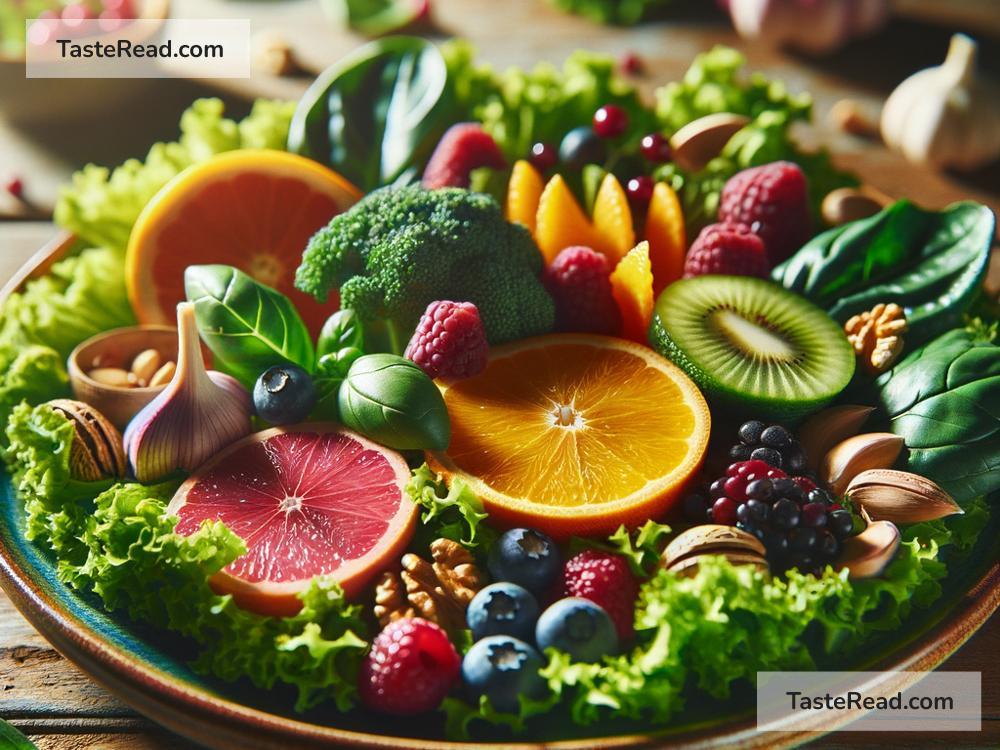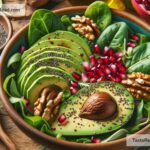Foods for Reducing Venous Insufficiency: Nourish Your Veins for Better Health
Do your legs feel heavy, achy, or swollen? Are you dealing with varicose veins or spider veins? If so, you might have a condition called venous insufficiency. This common issue happens when the veins in your legs struggle to send blood back to your heart, causing it to pool in your lower limbs. While lifestyle changes, exercise, and medical treatment are essential for managing this condition, your diet can also play a big role in improving vein health and reducing symptoms.
In this blog article, we’ll dive into the world of foods that can help support healthy veins and reduce venous insufficiency symptoms. The good news is that many of these foods are delicious, easy to find, and beneficial for your overall health too!
1. Fiber-Rich Foods: Keep the Blood Flowing Smoothly
One of the main factors contributing to venous insufficiency is increased pressure on veins, often caused by constipation or being overweight. Eating enough fiber helps keep your digestion regular and prevents straining during bowel movements, reducing pressure on your veins.
Some fiber-rich foods to add to your plate include:
– Whole grains: Oats, whole wheat bread, brown rice, and quinoa.
– Fruits: Apples, oranges, bananas, berries, and pears.
– Vegetables: Broccoli, carrots, spinach, and sweet potatoes.
– Legumes: Lentils, chickpeas, black beans, and peas.
Aim for at least 25-30 grams of fiber daily. Remember to drink plenty of water alongside fiber-rich foods to aid digestion!
2. Foods Rich in Antioxidants: Protect Your Veins
Antioxidants are compounds that protect your veins from damage caused by free radicals, which can weaken vein walls and valves over time. Vitamin C and flavonoids, in particular, are powerful antioxidants that promote proper blood circulation and help repair damaged veins.
Stock up on these antioxidant-rich options:
– Citrus fruits: Oranges, lemons, limes, and grapefruit are loaded with vitamin C.
– Berries: Blueberries, strawberries, raspberries, and blackberries are high in flavonoids.
– Dark chocolate (in moderation): Choose 70% cocoa or higher for maximum flavonoid content.
– Leafy greens: Kale, spinach, and swiss chard contain essential nutrients that support vein health.
By including these colorful foods in your meals, you’ll enhance blood flow and reduce inflammation in your veins.
3. Omega-3 Fatty Acids: Encourage Better Circulation
Omega-3 fatty acids are beneficial for cardiovascular health and blood circulation. They help to reduce inflammation and improve the flexibility of blood vessels, making it easier for blood to flow through your veins. Incorporating omega-3s in your diet may reduce swelling and improve symptoms of venous insufficiency.
Some omega-3-rich foods include:
– Fatty fish: Salmon, mackerel, tuna, and sardines are excellent options.
– Nuts and seeds: Walnuts, chia seeds, and flaxseeds are plant-based sources of omega-3s.
– Plant oils: Hemp seed oil and flaxseed oil are good choices for cooking or adding to salads.
Try to eat fatty fish 2-3 times a week or sprinkle nuts and seeds into your snacks for healthier veins.
4. Foods Rich in Magnesium: Relax and Strengthen Your Veins
Magnesium plays an important role in improving blood flow and reducing cramping or discomfort in the legs. It helps relax blood vessels and improve their elasticity, which can ease venous insufficiency symptoms.
Magnesium-rich foods to incorporate include:
– Leafy greens: Spinach, kale, and collard greens.
– Avocados: Creamy, nutrient-packed avocados provide magnesium and healthy fats.
– Nuts: Almonds, cashews, and Brazil nuts.
– Whole grains: Brown rice, quinoa, and whole wheat.
5. Hydrating Foods: Combat Fluid Retention
Swelling in the legs and ankles is a common symptom of venous insufficiency. Dehydration can make this worse, so it’s important to stay hydrated. In addition to drinking enough water, you can eat foods with a high water content to keep your body hydrated.
Hydrating foods include:
– Cucumber: Crisp and refreshing with a high water content.
– Watermelon: Sweet and hydrating during hot days.
– Celery: Excellent for snacking and full of water.
– Zucchini: Great for cooking or salads.
Final Tips for Healthy Veins
Diet alone won’t fix venous insufficiency, but it can make a big difference when combined with other healthy habits. Along with eating vein-supportive foods, try the following tips:
– Exercise regularly to improve circulation.
– Elevate your legs when resting to reduce swelling.
– Avoid prolonged sitting or standing.
By adding these nutrient-packed foods to your diet, you’ll be giving your veins the support they need to function better. Nourish your body, and your legs will thank you!
Take small steps each day, and you’ll likely notice improvements in how you feel—and in the health of your veins.
Disclaimer: Always seek advice from your healthcare provider before making major dietary or lifestyle changes, especially if you have existing medical conditions.


